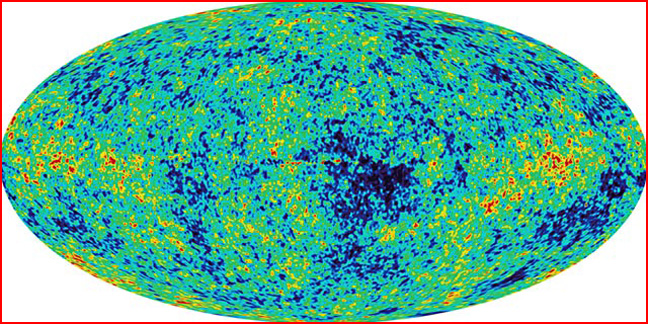|
|
||
 Credit: WMAP Science Team, NASA |
||
|
pic of the day Links:
Society for
|
Aug 12, 2004 The fundamental substance of reality is experience. Not atoms, not energy, not dark matter. Atoms, energy, and matter are ideas with which we organize and understand selected parts of our experience. They represent our experience in the same way a road map represents the experience of traveling. We experience riding in a Chevy on an asphalt surface, and we know where we are by looking at lines of ink on paper. The ink is not the asphalt; the paper is not the surface of the Earth; knowing our location is not being there. The ink and the paper function as a metaphor for our experience. Ideas are the ink of the mind, and atoms, energy, and dark matter are profoundly metaphorical. At the same time as they enable us to understand some experiences, they hide others. Different maps represent different experiences: Road maps help us to understand traveling on highways; topology maps help us to understand the lay of the land; political maps help us to understand conflicts among groups of people. Changes in our experiences require changes to our maps: A rerouted highway requires erasing old lines and inking in new lines; an earthquake requires drawing new contours; a conquest requires changing the color of an area. The map above is the most detailed picture ever made of microwave "light" from all over the sky. Using ideas that have worked well for understanding past observations, astronomers conclude that the universe is13.7 billion years old (accurate to 1 percent) and is currently expanding at the rate of 71 km/sec/ Mpc (accurate to 5 percent). But further experiences with details of the data encounter chasms in the middle of the freeway. Bridges are drawn in to span these gaps: The universe this map represents must be composed of 73 percent unobservable dark energy and 23 percent unobservable cold dark matter. Only 4 percent is left as observable atoms. To connect the few landmarks that are left with the assumptions about where it all began, additional metaphorical lines are inked in: This 96-percent-unobservable universe underwent episodes of rapid and slow expansion called "inflation" and "deceleration", and now it will "expand" forever. This is a metaphor that no longer represents our experiences. The map hides observations that don't fit this picture. Quantized redshifts detour around the idea of an expanding universe. Electric currents in space conquer dark matter. Galaxy/QSO associations correlate redshift with genealogy, not with distance. Braided filaments, axial ion beams, extended magnetic fields, non-gravitational orbits, cometary x-rays ... the space age has brought us experiences that defy representation with traditional ideas of gravity and gas. The discovery that the universe is composed mostly of plasma requires a new map: We need a map inked with circuits that transmit power from clusters to galaxies, from galaxies to stars, from stars to planets. This WMAP of tiny irregularities in the background microwave radiation will no longer chart the positions of unobservable phenomena. It will become a representation of the hum from the cosmic power lines that thread the universe. For good articles that deal with time and space see: http://www.quackgrass.com/time.html http://www.quackgrass.com/space.html
|
|
|
Copyright 2004: thunderbolts.info |
||
